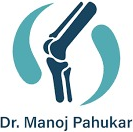Shoulder Arthroscopy Treatment in Nagpur
Advanced Arthroscopic Shoulder Treatments for Quick Relief & Faster Recovery
What Is Shoulder Arthroscopy
Shoulder arthroscopy is a minimally invasive surgical procedure used to diagnose and treat various conditions inside the shoulder joint. It involves inserting a small camera, called an arthroscope, into the shoulder joint through a small incision. This allows the surgeon to view the inside of the joint on a monitor and perform necessary repairs using specialized instruments.
Because of its precision and smaller incisions, shoulder arthroscopy often results in less pain, quicker recovery, and reduced scarring compared to traditional open surgery. It is one of the most effective techniques for managing complex shoulder problems with minimal disruption to surrounding tissues.

Indications for Shoulder Arthroscopy
Shoulder arthroscopy is recommended when shoulder pain, stiffness, or instability does not improve with medication, physiotherapy, or other conservative treatments. It helps in both diagnosing hidden joint problems and treating damaged tissues directly. This makes it a versatile solution for many common shoulder conditions.
Shoulder arthroscopy can be used to treat a variety of conditions, including:
Rotator Cuff Tears
- A rotator cuff tear is a condition where one or more of the tendons in the rotator cuff of the shoulder are torn. The rotator cuff is a group of four muscles and their associated tendons that stabilize the shoulder and allow for its wide range of motion. Tears can occur due to acute injury, such as a fall, or chronic overuse, often seen in repetitive overhead activities. Symptoms typically include shoulder pain, weakness, and reduced range of motion. Shoulder arthroscopy can be used for repairing torn rotator cuff tendons.
Shoulder Impingement Syndrome
- Shoulder impingement syndrome is a condition where the tendons of the rotator cuff and the bursa (a fluid-filled sac that reduces friction) become compressed or pinched during shoulder movements, particularly when lifting the arm overhead. This compression leads to pain, inflammation, and reduced range of motion in the shoulder. In such condition Shoulder arthroscopy can be used for removing inflamed or damaged tissue and bone spurs to alleviate pain and restore function.
Labral Tears
- A labral tear is an injury to the labrum, the ring of cartilage that surrounds the socket of the shoulder joint. This tear can cause pain, instability, and a catching or locking sensation in the shoulder. Shoulder arthroscopy can be used for repairing torn cartilage (labrum) in the shoulder joint.
Shoulder Instability
- Shoulder instability is a condition where the shoulder joint is loose and can slide around too much in the socket or even dislocate. This can be due to traumatic injury, repetitive strain, or congenital factors. Shoulder arthroscopy can be used for tightening or repairing ligaments to prevent dislocations.
Adhesive Capsulitis (Frozen Shoulder)
- Adhesive capsulitis, commonly known as frozen shoulder, is a condition characterized by stiffness, pain, and limited range of motion in the shoulder joint due to inflammation and thickening of the shoulder capsule. Shoulder arthroscopy can be used to release tight joint capsule tissues.
Arthritis
- Arthritis in the shoulder involves the inflammation and degeneration of the shoulder joint cartilage, leading to pain, stiffness, and decreased mobility. The most common types are osteoarthritis and rheumatoid arthritis. Shoulder arthroscopy can be used for debriding loose cartilage and smoothing the joint surfaces.
Biceps Tendon Issues
- Biceps tendon issues refer to problems with the tendons that connect the biceps muscle to the shoulder and the elbow. These can include tendinitis (inflammation of the tendon), tendon tears, and instability of the tendon in its groove. Shoulder arthroscopy can be used for repairing or releasing the biceps tendon.
Procedure
Shoulder arthroscopy is performed using advanced minimally invasive techniques, making it safer and less painful than traditional open surgery. The procedure involves using a tiny camera and specialized instruments to diagnose and repair shoulder problems with great precision. This allows the surgeon to treat the joint while minimizing damage to surrounding tissues.
Steps of the procedure include
- Preparation: The patient is typically given general anesthesia. The shoulder is cleaned and sterilized.
- Incisions: Small incisions (portals) are made around the shoulder.
- Insertion of Arthroscope: The arthroscope is inserted into one of the portals, and the inside of the joint is visualized on a monitor.
- Repair: Specialized instruments are inserted through other portals to perform the necessary repairs.
- Closure: Once the procedure is complete, the instruments are removed, and the incisions are closed with sutures or sterile strips.
Recovery
Recovery after shoulder arthroscopy depends on the type of repair performed and the patient’s overall health. Since it is a minimally invasive procedure, most patients experience quicker healing compared to open surgery. However, proper rest, rehabilitation, and follow-up care are essential for a full recovery.
General recovery guidelines include
- Pain Management: Pain is typically managed with medications.
- Immobilization: The shoulder may be immobilized with a sling for a period to protect the repair.
- Physical Therapy: Rehabilitation exercises are crucial for regaining strength and mobility.
- Follow-up: Regular follow-up appointments with the surgeon to monitor progress.
Risks and Complications
Possible risks include
- Infection: Risk of infection at the incision sites.
- Bleeding: Risk of bleeding during or after the procedure.
- Nerve Injury: Potential for damage to surrounding nerves.
- Stiffness: Postoperative stiffness or loss of range of motion.
- Incomplete Repair: The possibility that the initial repair may not fully resolve the issue.
Advantages
Key advantages include
- Less Pain: Minimally invasive nature results in less postoperative pain.
- Faster Recovery: Smaller incisions lead to quicker healing.
- Reduced Scarring: Small incisions result in minimal scarring.
- Shorter Hospital Stay: Often performed as an outpatient procedure.
Conclusion
Take the First Step Towards Shoulder Relief
Don’t let shoulder pain limit your movement and quality of life. With advanced arthroscopic techniques and expert care from Dr. Manoj Pahukar, you can regain mobility and live pain-free.
Frequently Asked Questions
How long does it take to recover from shoulder arthroscopy?
Recovery time varies depending on the type of procedure. Most patients can resume light activities within 2-3 weeks, but full recovery may take 3-6 months with proper rehabilitation.
Will I need physiotherapy after shoulder arthroscopy?
Yes, physiotherapy is essential for restoring shoulder strength, mobility, and function. Your doctor will provide a personalized rehab plan to ensure the best outcome.
Is shoulder arthroscopy painful?
Mild pain or discomfort is common after surgery, but it is usually manageable with medications and physiotherapy. Pain significantly improves as healing progresses.
When can I return to work or sports after shoulder arthroscopy?
Desk jobs can usually be resumed within 1-2 weeks. However, heavy lifting or sports may take 3-6 months depending on the procedure performed.
What shoulder problems can be treated with arthroscopy?
It is commonly used for rotator cuff tears, labral tears, shoulder instability, impingement syndrome, removing bone spurs, and treating joint inflammation.
Are there risks with shoulder arthroscopy?
Complications are rare but may include stiffness, infection, bleeding, or nerve injury. With skilled surgical care and proper aftercare, these risks are minimized.
Will I need to stay in the hospital after shoulder arthroscopy?
Most patients go home the same day (day-care surgery). Only in rare cases is an overnight stay required for observation.
How soon will I regain full movement of my shoulder?
Basic movement usually returns within a few weeks, but complete strength and range of motion can take a few months with regular physiotherapy.
